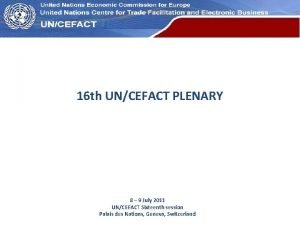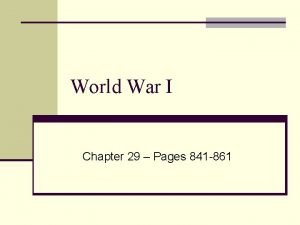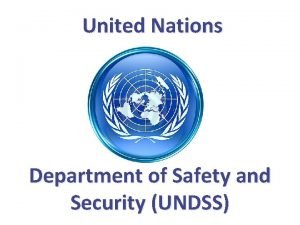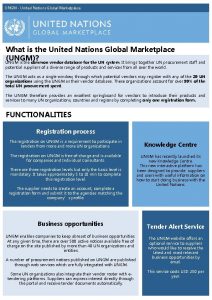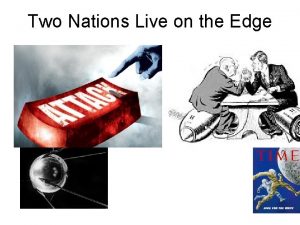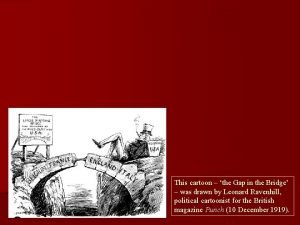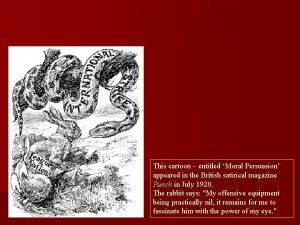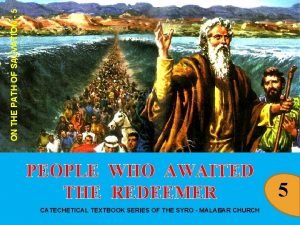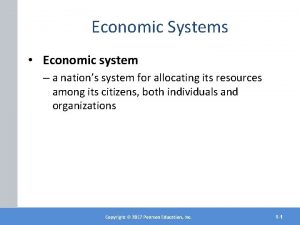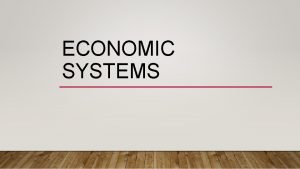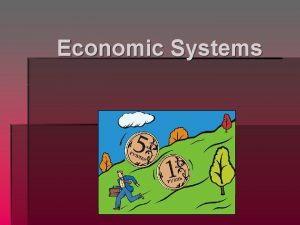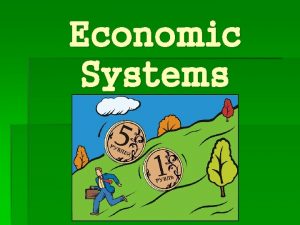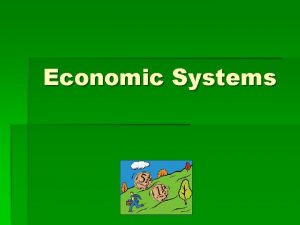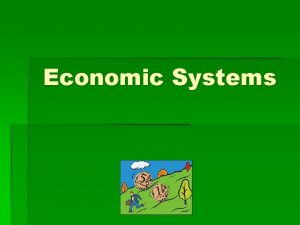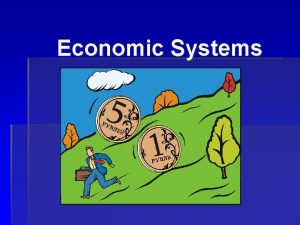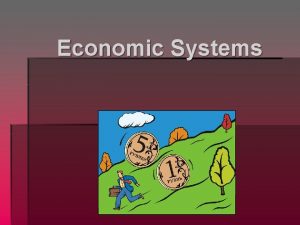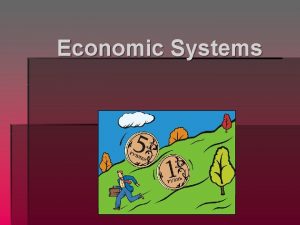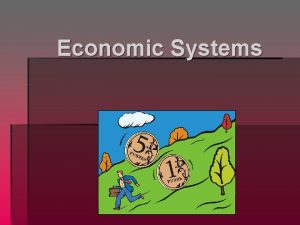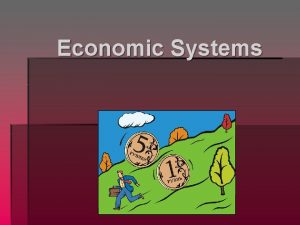Economic Systems Economic Systems Economic System nations system














- Slides: 14

Economic Systems

Economic Systems Economic System- nation’s system for using its resources to satisfy citizens needs and wants

Traditional Economy • Economic decisions are based on tradition, customs, beliefs, and religion • The community answers the economic questions and owns the factors of production • Located in parts of Asia, Africa, the Middle East, and Latin America

Command Economy • Economic decisions are based on the government (consumers have a small role) • The government answers the economic questions and owns the factors of production • Located in most communist countries such as North Korea, the former Soviet Union

Market Economy • Economic decisions are based producers and consumers (supply and demand) • Producers answer the economic questions and own the factors of production • Located in very few (if any) places in the world

Mixed Economy • Economic decisions are based on producers, consumers, and government regulation (mixture of Market and Command Economies) • Producers, consumers & the government answer the economic questions and own the factors of production • Located in the US, most of Europe, and most of Asia (most common)

Mixed Economy • Mixed economies can vary and lean more toward command or market economies • Ex. The US is more market and China is more command https: //www. youtube. com/watch? v=5 xgw. YRX 19 V U

Measuring the Economy • Economies fluctuate through periods of prosperity and struggle • Economic growth benefits everyone – Businesses are producing more goods and services – More workers are hired – People have more money to buy goods and services • Gross Domestic Product (GDP)- the dollar value of all goods and services produced in a country in a year

• Business Cycle- alternating intervals of growth and decline in an economy

Business Cycle • Begins with expansion leading to an economic peak • Expansion- economy is growing (new businesses, more production, employment) • Peak- highest point of the business cycle, period of prosperity • Eventually the economy levels off and begins to contract into trough • Contraction- economy is slowing (businesses slow, less production, less employment) • Trough- lowest point of the business cycle, period of recession or depression • The economy then moves back up with expansion



• Recession- when the economy goes down for at least 6 straight months • Depression- long standing recession (several years, large number of people out of work, shortages, etc. ) • Unemployment Rate- percent of people in the labor force not working and looking for a job

Inflation • Inflation- increase in the general level of prices • Hurts the economy because it reduces purchasing power (a dollar doesn’t buy as much today as it did 10 years ago) • Inflation typically goes up overtime (it does not usually increase by a lot in a short period of time) • Consumer Price Index (CPI)- prices of 400 commonly used goods tracked by the US government to measure inflation
 United nations economic commission for europe
United nations economic commission for europe Economics unit 1 lesson 2 difficult choices
Economics unit 1 lesson 2 difficult choices Economic growth vs economic development
Economic growth vs economic development What is economic growth and development
What is economic growth and development Which three nations belonged to the triple entente
Which three nations belonged to the triple entente United nations
United nations Undss logo
Undss logo United nations global marketplace
United nations global marketplace Two nations live on the edge
Two nations live on the edge Keystone usa cartoon
Keystone usa cartoon Rabbit snake cartoon
Rabbit snake cartoon Edu tr
Edu tr Chapter 34 the colonies become new nations
Chapter 34 the colonies become new nations Friendly nation 4 letters
Friendly nation 4 letters Abraham father of many nations
Abraham father of many nations
